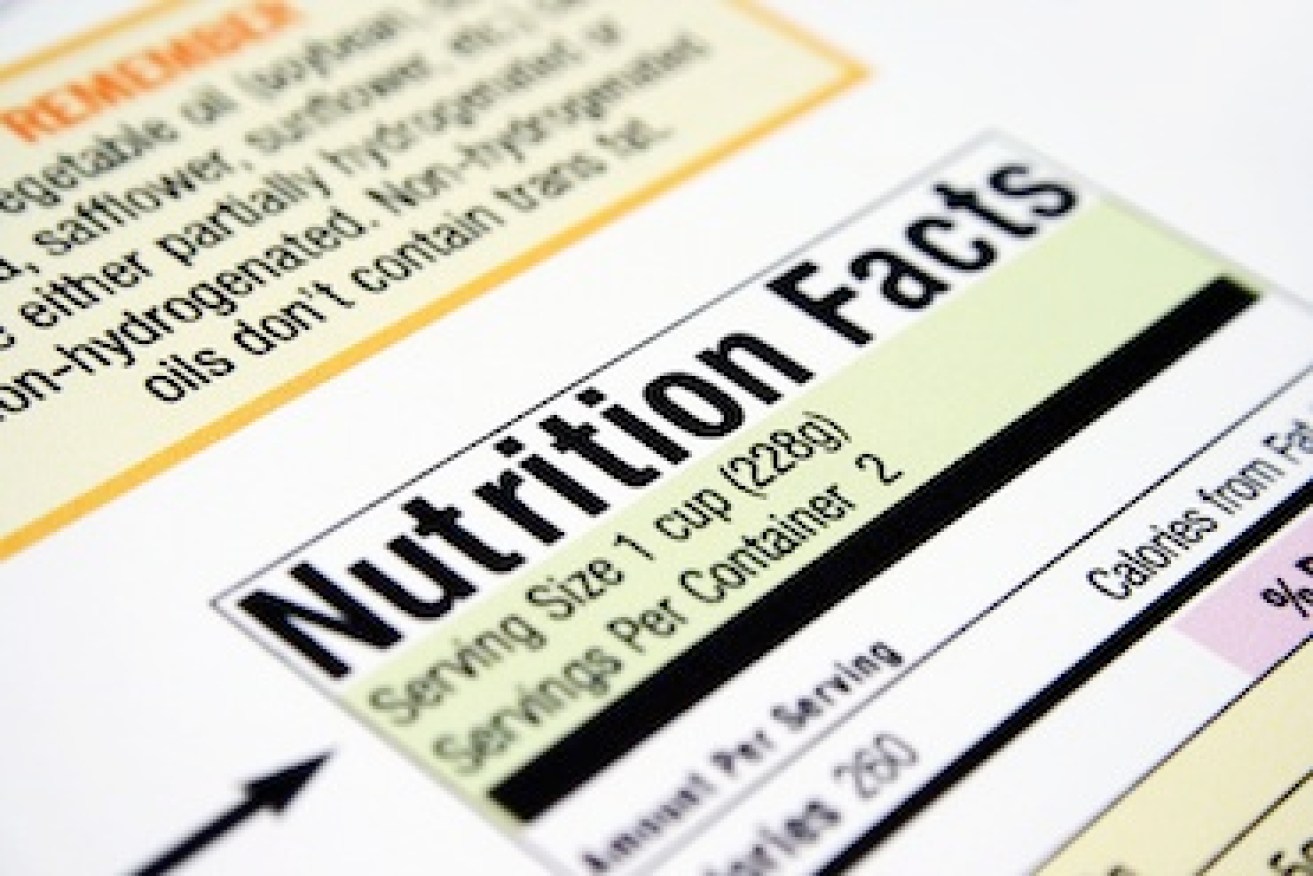Why you should ignore serving sizes on food labels


Serving sizes vary from product to product. PHoto: Shutterstock
Do you use the ‘per serve’ column on food labels to determine if a packaged food is a healthy choice?
Serving sizes are meant to reflect a realistic portion of the food that you would normally consume, but in reality the portion size (the amount you actually eat) and serving size don’t always match up.
• The get smart diet: seven foods for brain health
• Store-bought salmon is not the colour you think
Why? Because it’s up to food manufacturers to determine serving sizes. Self interest, much?
The good news is food labels feature other much more helpful comparison tools to help you make more nutritious choices at the supermarket.
The trouble with serving sizes
Because food manufacturers define their own serving size parameters, serving sizes are often inconsistent between comparable products, even within the same brands. Many are straight-up unrealistic.
“Food manufacturers will determine what they consider a standard serve of their food,” says accredited practising dietitian Kate Gudorf, a spokesperson for the Dietitians Association of Australia.

Serving sizes vary from product to product. Photo: Shutterstock
“Therein lies the problem because one breakfast cereal manufacturer may consider 30g to be a standard serving and another may consider 50g to be a standard serving.
“If you’re interested in the nutrition information and you’re looking up the per serving column and comparing one breakfast cereal to another you might find it’s very difficult to compare.
“One cereal may look much healthier because the serving size is much smaller than the other breakfast cereal.”
Research by The George Institute for Global Health found serving sizes vary significantly between similar products in everyday food categories.
Among 40 corn chip products surveyed, serving sizes ranged from 25g to 100g, and of 101 types of potato chips serving sizes were listed as anywhere between 19g and 50g. According to The Checkout, even different sized packages of the same branded products often carry different serving sizes. Scary stuff indeed.
And because daily intake (DI) percentages for energy, fat, salt and sugar are based on serving sizes, it’s best to treat the associated health claims with caution.
Compare apples with apples
Instead, use the ‘per 100g’ column – which lives next to the ‘per serve’ column – to compare food products.
“The per 100g column is very useful because it allows you to compare different products and also gives an estimate of how much you will be eating of a particular nutrient if you can estimate what your serving size will be,” says Associate Professor Tim Crowe from the School of Exercise and Nutrition Sciences at Deakin University.
Ms Gudorf agrees: “The nice thing about Australian nutrition information panels is there is always that 100g column so that’s where a consumer can look to compare one food item to the next. If you look at the 100g column you’re comparing apples with apples.”
She recommends comparing a range of similar products to get a sense of the differences in fat, sugar, salt and energy content. Easy guidelines to aim for are: less than 10g of fat, 15g of sugar and 120mg of salt per 100g.
“The caveat is that some foods may look like they have a lot more sugar because they contain fruit and fruit is a natural sugar source,” says Ms Gudorf. “Fruit muesli might have 25g of sugar per 100g but a lot of that sugar is from fruit.”
A starry alternative
If possible, Assoc Prof Crowe recommends choosing foods that have been awarded four or five stars.

The health star rating system is a clearer alternative.
In much the same way as the energy efficiency of white goods is measured with a star system, under the Health Star Rating system packaged foods are given a star rating based on their nutritional profile.
The system is voluntary so not all packaged foods list a star rating, but as the number of stars is calculated using the per 100g figures Assoc Prof Crowe says it’s a much more efficient way to compare products in the supermarket.
“It’s done all of the work for you – it looks at all of the nutrients and gives a star rating of a food without any complicated mathematical formulas,” he says.
“The system is not perfect but it is much, much better than trying to understand labels.”








